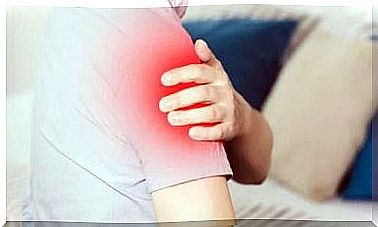Paget’s Disease, Everything You Need To Know

Paget’s disease is a disease that affects the bones, altering their characteristics and functionality. In this way, the bone structures can see their texture, density and size changed. This disease is also known as deforming osteitis.
Today we know that it affects certain bones more frequently, such as those of the spine, skull or pelvis, or the femur.
What are the characteristics of bone tissue?
In general we can say that the bone tissue has specific cells: osteoclasts and osteoblasts. The former have the task of destroying the now old or damaged bone tissue, while the latter are responsible for regenerating the corresponding areas. In this way our bones are able to renew themselves continuously thanks to the coordinated functions of these cells.
However, when Paget’s disease occurs, the osteoclasts and osteoblasts act faster, in an overactive manner. The consequence is that certain regions of the bones grow abnormally and can become more fragile.
Symptoms of Paget’s disease
A high percentage of clinical cases are asymptomatic: in other words, patients do not have any symptoms. However, it is possible that people can develop a series of signals or alterations associated with this disorder. Among the most common symptoms we can mention the following:
- Intense pain in the bones, which remains constant over time, both in situations of rest and while making a movement.
- Joint disorders that can lead to osteoarthritis. As a general rule, they appear more frequently in certain structures such as the hip, knees or shoulders.
- Headache or headache: can appear together with hearing loss.
- Kyphosis or a feeling of numbness in the spine.
- Pagetic skull : increase in size of this set of bones.
- Formation of other bone deformations, such as the “pastoral stick femur” or the “saber tibia”.
- Increased temperature in the skin near the affected bones.
- Predisposition to fractures.

Causes
The cause of this disease is unknown. However, according to research findings, it could be due to a viral infection, such as measles. At the same time, the possible influence produced by genetic (family history) and environmental factors (exposure to certain chemicals) is being examined.
Diagnosis
As a general rule, the medical staff performs a series of clinical tests that allow you to detect this disorder and exclude others that have similar symptoms. As a result, the following are realized:
- Physical examination, through which specialists check the patient’s symptoms (if any), background and medical history.
- Radiographs that allow you to observe the areas of rapid bone creation and destruction.
- Computed Axial Tomography or CT.
- Bone scan.
- Bone biopsy.
- Other routine tests, such as blood and urine tests.
Treatment of Paget’s disease
Generally, no specific treatment is required for this disease, since most cases are asymptomatic. However, in severe cases, doctors may indicate the administration of certain therapies:
- Medicines : mainly bisphosphonate compounds and calcitonin. The use of anti-inflammatories, to reduce inflammation, and analgesics, to relieve pain or discomfort, may also be prescribed.
- Surgery, in case of fracture, severe pain or severe deformation of the bones.

Prevention
It has not yet been possible to identify a number of preventive measures that can significantly reduce the risk of contracting this disease. However, in order to enjoy a good quality of life, it is important to take care of your health.
To do this, all we need is moderate physical activity and a balanced, healthy and adequate diet. It is also advisable to avoid the practice of unhealthy habits such as alcoholism, smoking or the consumption of toxic substances, such as drugs.
Finally, it is important to say that Paget’s disease is associated with genetic variables that predispose the person to suffer from alterations in bone metabolism. For this reason, it is important to report any cases in the family and to draw up a complete medical history, which also includes the degree of damage and limitation produced.








